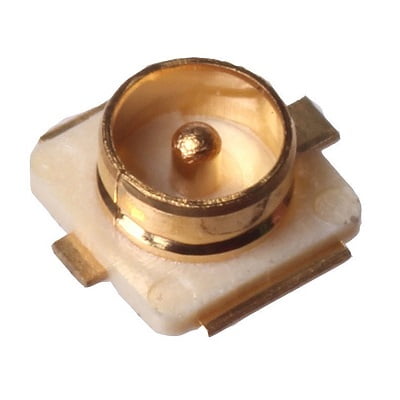UFL connector known for their miniature size and versatility, serve as vital components in wireless communication systems. These connectors, despite their small stature, play a crucial role in facilitating reliable connections between antennas and electronic devices in various applications.
Understanding UFL Connectors
What is a UFL Connector?
A UFL connector, also referred to as an IPEX connector, is a miniature coaxial RF connector widely used in compact electronic devices. It features a snap-on connection mechanism and is commonly found in applications where space constraints and the need for a low-profile design are paramount.
Characteristics of UFL Connectors
1. Miniature Size:
UFL connectors are incredibly small, making them suitable for use in devices where space is limited, such as mobile phones, Wi-Fi modules, GPS devices, and other compact electronics.
2. Snap-On Mechanism:
These connectors employ a snap-on mating mechanism, allowing quick and secure connections without the need for additional tools, ensuring ease of assembly and disassembly.
3. Frequency Range:
UFL connectors support a wide range of frequencies, typically up to several gigahertz, making them suitable for various wireless communication applications.
Making Process of UFL Connector:
The UFL male connector, commonly used in electronic devices for connecting miniature antennas or modules, can be assembled with precision following these steps:
Gather the Necessary Materials
To craft a UFL connector, prepare the following materials: UFL connector components (socket and plug), appropriate coaxial cable, soldering iron, solder, wire stripper, and heat shrink tubing.
Cable Preparation
Begin by stripping the outer insulation of the coaxial cable carefully to expose the inner conductors. Ensure proper sizing to fit the UFL connector components.
Connector Assembly
Soldering: Solder the inner conductor of the coaxial cable to the designated terminal or pad on the UFL plug, ensuring a secure and strong connection.
Shield Connection: Solder the shield or outer conductor of the coaxial cable to the corresponding terminal or pad on the UFL plug, ensuring proper grounding.
Insulation and Protection: Slide the heat shrink tubing over the soldered connections and carefully apply heat to shrink and secure the tubing in place, providing insulation and protection.
Attachment: Carefully affix the UFL plug onto the antenna or module, ensuring a firm and secure connection to complete the UFL assembly process.
Mastering the delicate process of assembling a UFL connector involves precision, attention to detail, and careful handling of components to ensure optimal performance and reliability in electronic devices.
Applications of UFL Connectors
Wireless Communication Devices
UFL connectors are extensively used in wireless communication devices, such as routers, access points, Bluetooth modules, and Wi-Fi cards, enabling connectivity between antennas and these devices.
Consumer Electronics
In consumer electronics like smartphones, tablets, laptops, and wearable devices, UFL connectors facilitate connections between internal antennas or RF modules and the device’s mainboard, ensuring reliable wireless connectivity.
IoT (Internet of Things)
The compact size and reliable performance of UFL connectors make them suitable for IoT devices, allowing seamless connectivity in smart home devices, health monitoring equipment, and various IoT applications.
Advantages of UFL Connectors
Space-Saving Design
Their miniature size enables manufacturers to integrate them into compact devices without compromising overall design aesthetics or functionality.
Flexible Applications
UFL connectors offer versatility, allowing engineers and designers to implement them in a wide array of electronic devices that require reliable RF connections.
High Performance
Despite their small size, UFL connectors exhibit excellent performance in terms of signal transmission, ensuring minimal signal loss and maintaining signal integrity.
Future Trends and Innovations
Enhanced Durability
Ongoing advancements aim to improve the durability of UFL connectors, making them more robust and reliable in challenging operating conditions.
Higher Frequency Support
Developments in UFL connector technology focus on expanding the frequency range they can support, catering to the increasing demands of high-frequency applications in modern communication systems.
Conclusion
UFL connectors, with their miniature size, reliability, and versatility, are indispensable components in wireless communication devices and compact electronics. Their ability to provide secure and efficient RF connections in constrained spaces has made them vital in ensuring seamless wireless connectivity in various applications across diverse industries.

